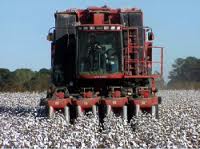
Article by Rodney Clouser and John Vansickle
On Friday, February 27th, U.S. Secretary of Agriculture Tom Vilsack announced a one-time extension by USDA for landowners to reallocate base acres and update payment yields for 2014 Farm Bill covered commodities, which for the first time excludes cotton. The new final update deadline has been extended to March 31, 2015.
Base acre reallocation and yield updates are decisions made by the farm landowner! In many instances, the landowners and farm producers will be the same individuals, but not in all cases. A landowner who rents her/his land to a producer may be a producer participant if they are “actively engaged in farming.” Actively engaged in farming is defined by USDA as contributions “of capital, land, and/or equipment, as well as active personal labor and/or active personal management. The management contribution must be critical to the profitability of the farming operation and the contributions must be at risk” (USDA Farm Services Agency, Payment Legibility, Actively Engaged in Farming).
The last time landowners had an opportunity to update base acres and payment yields was in 2002 and in some instances 1985! Production practices have changed significantly since then and it is expected that in many instances yields will be higher. As a general rule, if payment yields can be increased from their current base, you should update them. Yield updates can be done selectively for the USDA covered commodities included in the 2014 Farm Bill legislation. In other words, you can choose to update only those yields that are higher than your current base and do nothing with those that are not.
If you are the landowner, it is important that you and the renter communicate in order to get the most current yield data needed for the yield update. Generally, the updated yields are equal to 90 percent of the farm’s average actual yields from 2008 to 2012. However, the county’s substitute yields can be used in those years where they are higher than your actual yields or where the renter fails to provide actual yields. The substitute yield is 75 percent of the county-wide average from 2008-2012. Your potential yield update would then be 90 percent of the average yield on your farm including substitution yields where you lack the data, or where the substitution yield is higher than the actual yield on your farm for any year between 2008 and 2012. Again, the general rule is that if updated yields are higher than your current payment yield, then you should update them.
Your existing base acres can be reallocated across program crops planted on your land (excluding cotton) between 2009 and 2012. The potential reallocated base acres will equal the existing total base acres on the farm using the average proportion of each covered commodity planted on the farm from 2009 to 2012. The landowner will have the opportunity to keep their current base acres (excluding cotton), or to update to the new base calculated from actual plantings between 2009 and 2012. Existing cotton base acres will be designated ‘generic base’ and are allocated each year based on the planted acres of covered commodities on the farm.
The new base acre reallocation and yield updates are now due at the same time as the ARC/PLC decisions. However, the ARC/PLC decisions are made by the agricultural producer. More on those decisions can be found in a companion information sheet.
University of Florida: John VanSickle sickle@ufl.edu Rod Clouser rclouser@ufl.edu
 0
0
